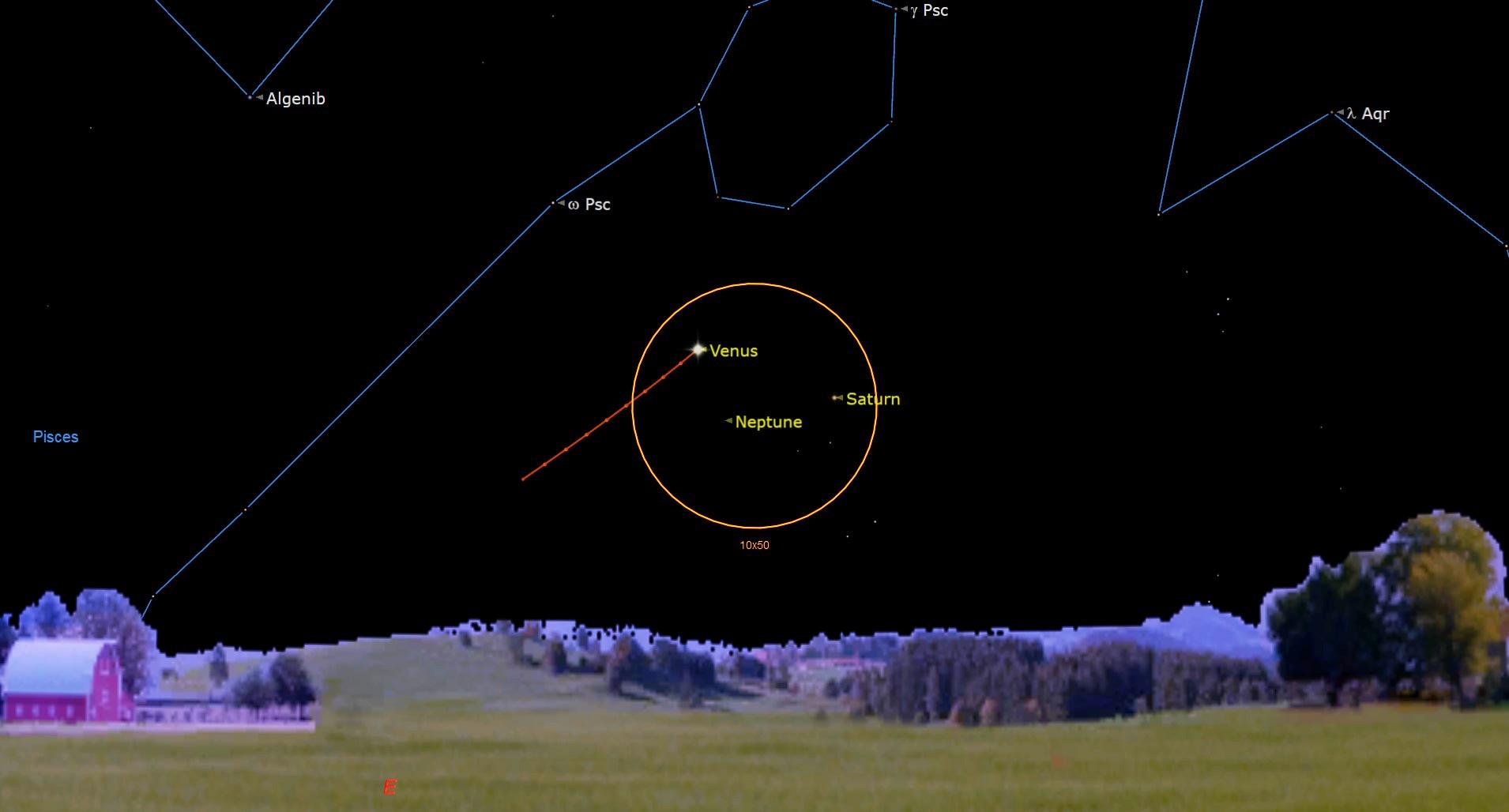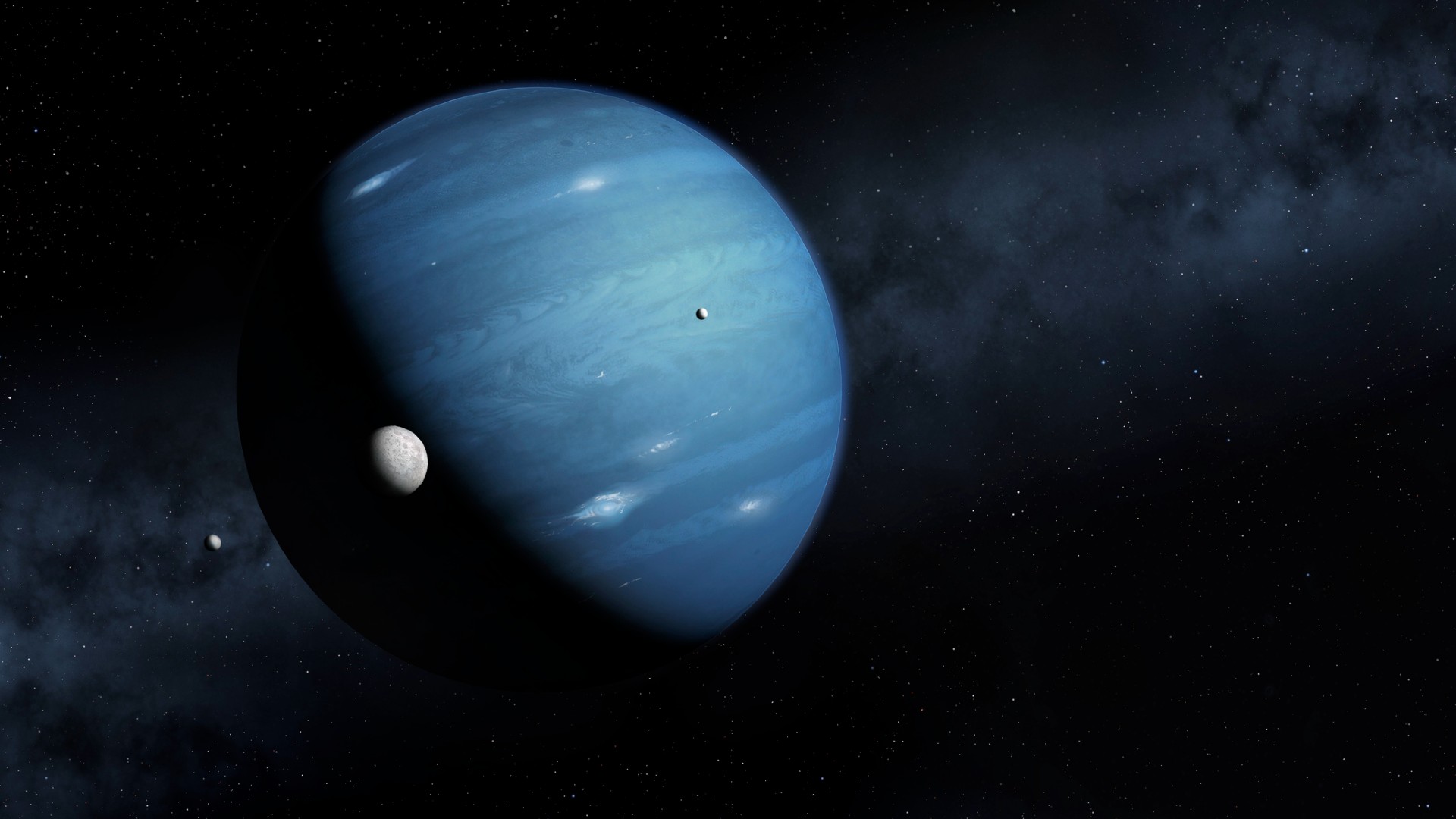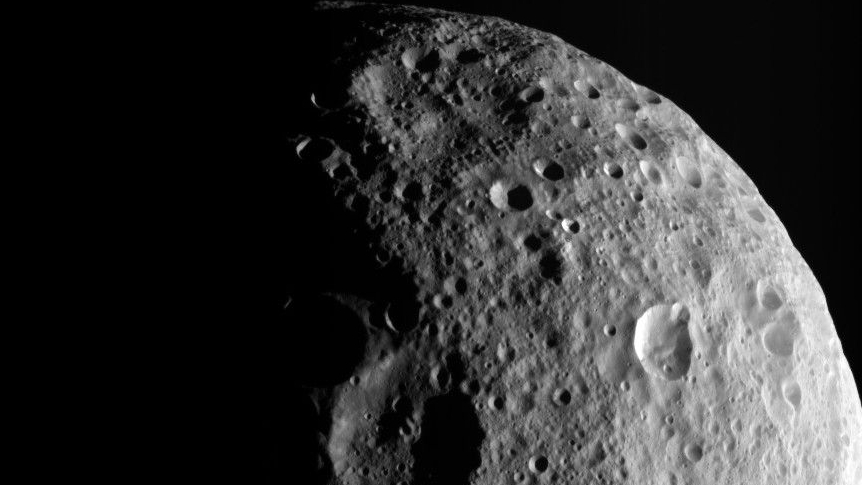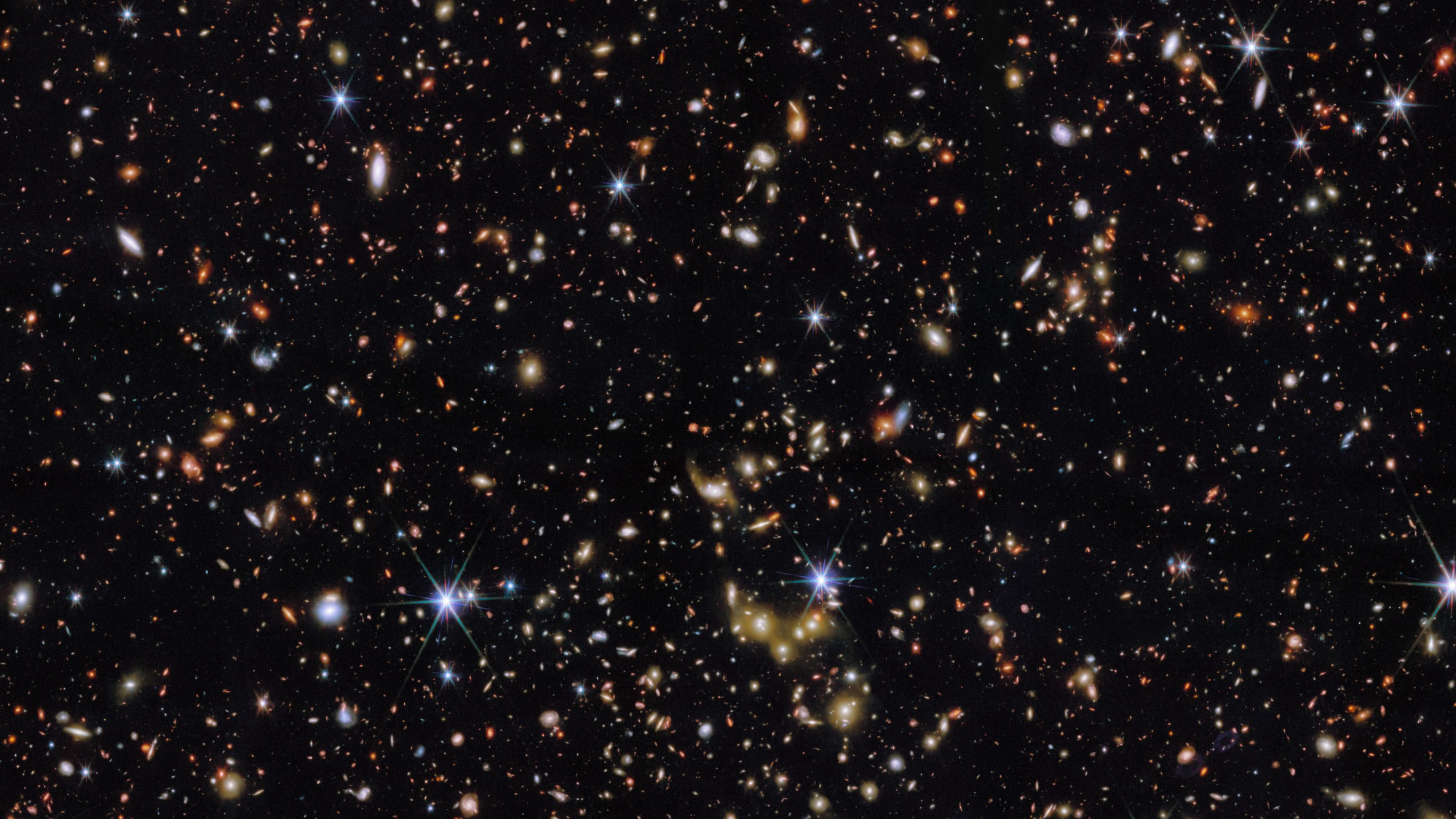On Tuesday, July 2, a lot of ocean and a few tiny bits of land will lie under a moon-blackened sun. A total solar eclipse will take place that day ... the first total eclipse of the sun since the Great American Total Eclipse of Aug. 21, 2017.
On that day, the long, thin finger of the moon's dark umbral shadow will again draw its tip — averaging 95 miles (150 kilometers) in width — across Earth's surface. But unlike the total solar eclipse in 2017, which offered a multitude of possibilities for land-based viewing, the 6,800-mile (11,000-km) path of the 2019 eclipse will be confined almost exclusively to the South Pacific Ocean.
Related: Total Solar Eclipse 2019: A Complete Guide
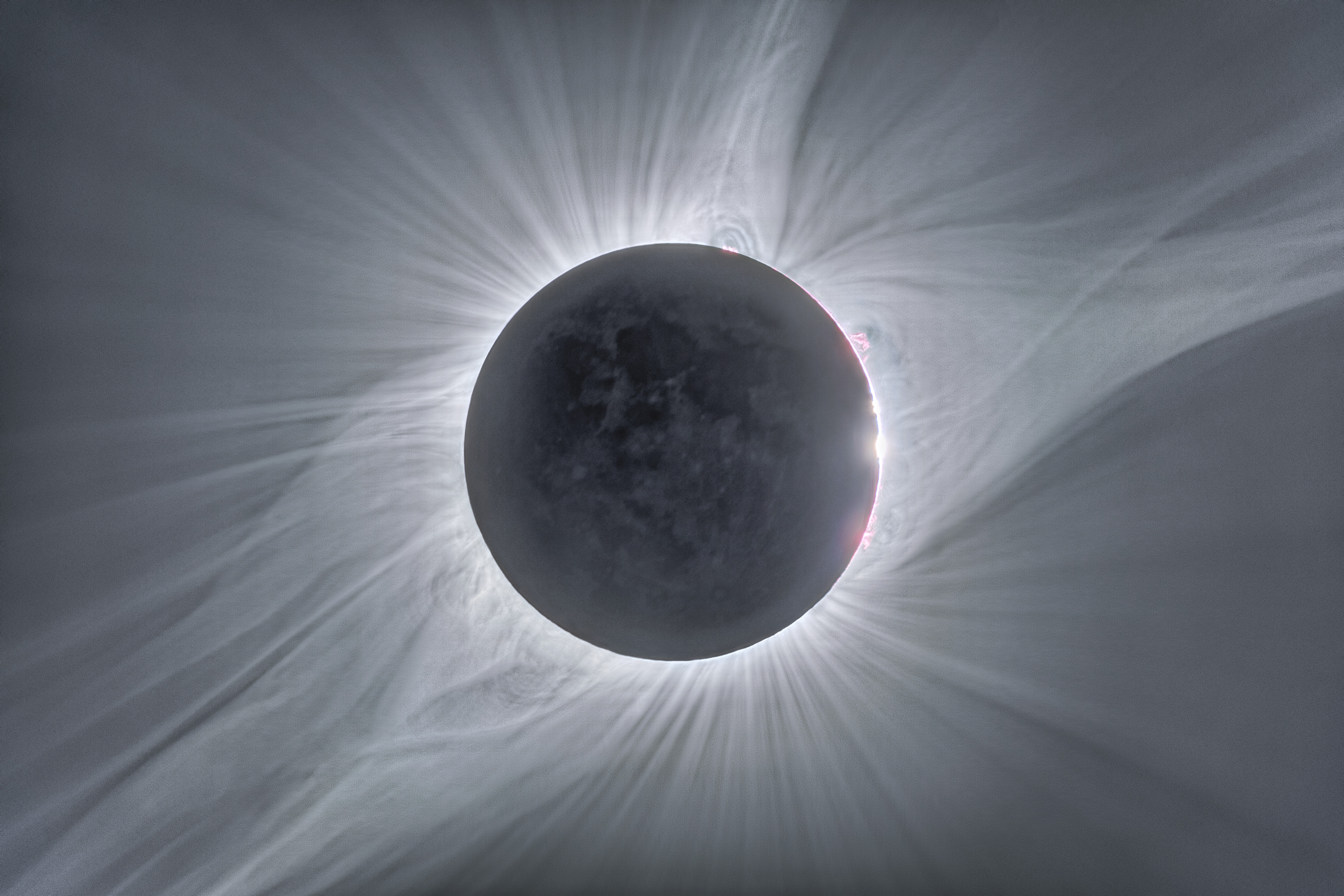
Story of the shadow
The total eclipse track begins at local sunrise, 2,175 miles (4,000 kilometers) east-northeast of Wellington, New Zealand. The moon's dark shadow will make its very first landfall when it moves across Oeno Island, a remote coral atoll and part of the Pitcairn Islands. Oeno Island serves as a private holiday site for the few residents of Pitcairn Island, who travel there and stay for two weeks in January, during the Southern Hemisphere summer.
The total area of Oeno Island measures only 120 acres. The island is known principally for its colony of Murphy's petrels; with about 12,500 pairs, the site is estimated to be the second largest colony of these birds in the world. The birds — and likely some hardy eclipse chasers — will experience 2 minutes and 53 seconds of total eclipse at 18:24 GMT.
The moment of greatest eclipse comes just 1 hour later, when the duration on the centerline of the eclipse path lasts the longest: 4 minutes and 32.8 seconds, at a point about 1,600 miles (2,600 km) southwest of Isla Isabela of the Galapagos Islands, but still over open ocean waters.
The shadow at this time also misses the mystical Easter Island, passing some 670 miles (1,080 km) to the north. However, a special airborne expedition will attempt to "chase" the shadow using a 787 Dreamliner aircraft, in hopes of extending the length of totality to 9 minutes.
Get the Space.com Newsletter
Breaking space news, the latest updates on rocket launches, skywatching events and more!
Sadly, there will be no other landfall along the entirety of the Pacific track of 5,900 miles (9,500 km). Out of the 161 minutes that the shadow's umbra will be in contact with Earth, only in the final 4 minutes will it make its second landfall in central Chile, at 4:39 p.m. local time (2039 GMT), before rapidly continuing east-southeast through central Argentina. The path will come to an end just before reaching Río de la Plata and the nation of Uruguay, and then it will lift off Earth at sunset and return to space.
World-class observatories in the path
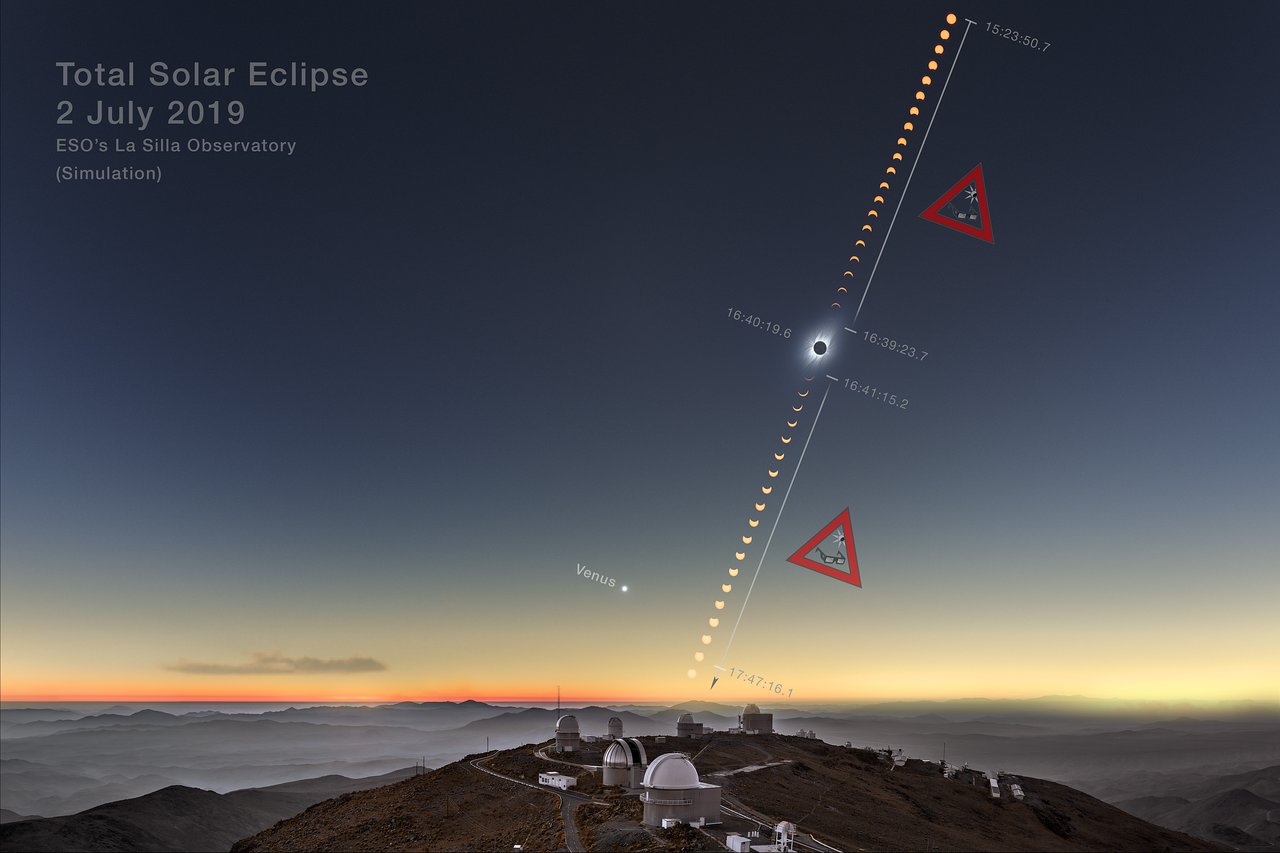
The shadow's path will take it on a southeastern course, where it will envelop the Elqui Valley, a region 87 miles (140 km) long that stretches from the Pacific Ocean eastward into the Andean foothills. The valley typically enjoys exceptionally dry and clear weather, which is the chief reason, notes astronomer and highly regarded eclipse expert Fred Espenak, "that a string of major international astronomical observatories have been built there; it's no surprise then that the Elqui Valley is the focus of many 2019 eclipse expeditions."
Indeed, it is a very fortuitous circumstance that Cerro Tololo Inter-American Observatory, a world-class facility of astronomical telescopes and instruments located 50 miles (80 km) east of La Serena, Chile, at an altitude of 7,200 feet (2,200 meters), is within the totality path and will witness 2 minutes and 6 seconds of total eclipse.
Several observatories in the track of totality of the solar eclipse have now announced live webcasts; here's how to watch them live online.
After the eclipse passes over Chile, the speed of the umbral shadow will rapidly increase as it begins to slide off Earth's surface. In fact, the shadow covers the 800-mile (1,300 km) stretch across Argentina in only 3 minutes. That equates to an average speed of 16,000 miles (26,000 km) per hour!
Missed it by that much ...
Some notable metropolitan areas that will see a very large partial eclipse near sunset include Montevideo (89%) and Santiago (93%).
But by far the most tantalizing view will be from Buenos Aires, the capital and largest city of Argentina. The 15.5 million people who live in this city's metropolitan area will be able to watch as the moon begins to cover the sun at 4:36 p.m. local time and, just over an hour later at 5:44 p.m., 99.5% of the sun will be covered, just moments before the sun disappears below the horizon. Prime viewing locations in the city will be from the roofs of tall buildings and towers, offering unobstructed views toward the west-northwest.
But for the grand view of a total eclipse, one will need to get into the totality path by traveling about 18 miles (30 km) to the southwest. There are many roads leading out of the city to totality. I suspect that there will be a mass exodus that afternoon from "The Paris of the South," by people hoping to catch a once-in-a-lifetime glimpse of the darkened sun.
Unfortunately, the viewing prospects are not good. As meteorologist Jay Anderson writes in the "Observer's Handbook 2019" of the Royal Astronomical Society of Canada: "The eclipse track comes to an end in the southern suburbs of Buenos Aires, but the location is not enticing because of the low altitude of the sun and an average cloudiness in the region of around 65%."
Coverage for other places
A partial eclipse will also be visible from Panama, Costa Rica and a slice of southwest Nicaragua, as well as much of South America, except for the northern and eastern sections.
In the table below, I have provided local circumstances for 13 cities in Central and South America as well as for major population centers on two islands: the Falkland Islands (F.I.) and Easter Island (E.I.). Times are in local civil times for the places listed. If the sun has set before the eclipse has ended, three dashes (- - -) are given. The percentage amount of the sun's diameter that is hidden by the moon is provided. For maximum eclipse, an asterisk (*) indicates that this is also sunset. A double asterisk (**) indicates how much of the sun's diameter is hidden as it is setting.
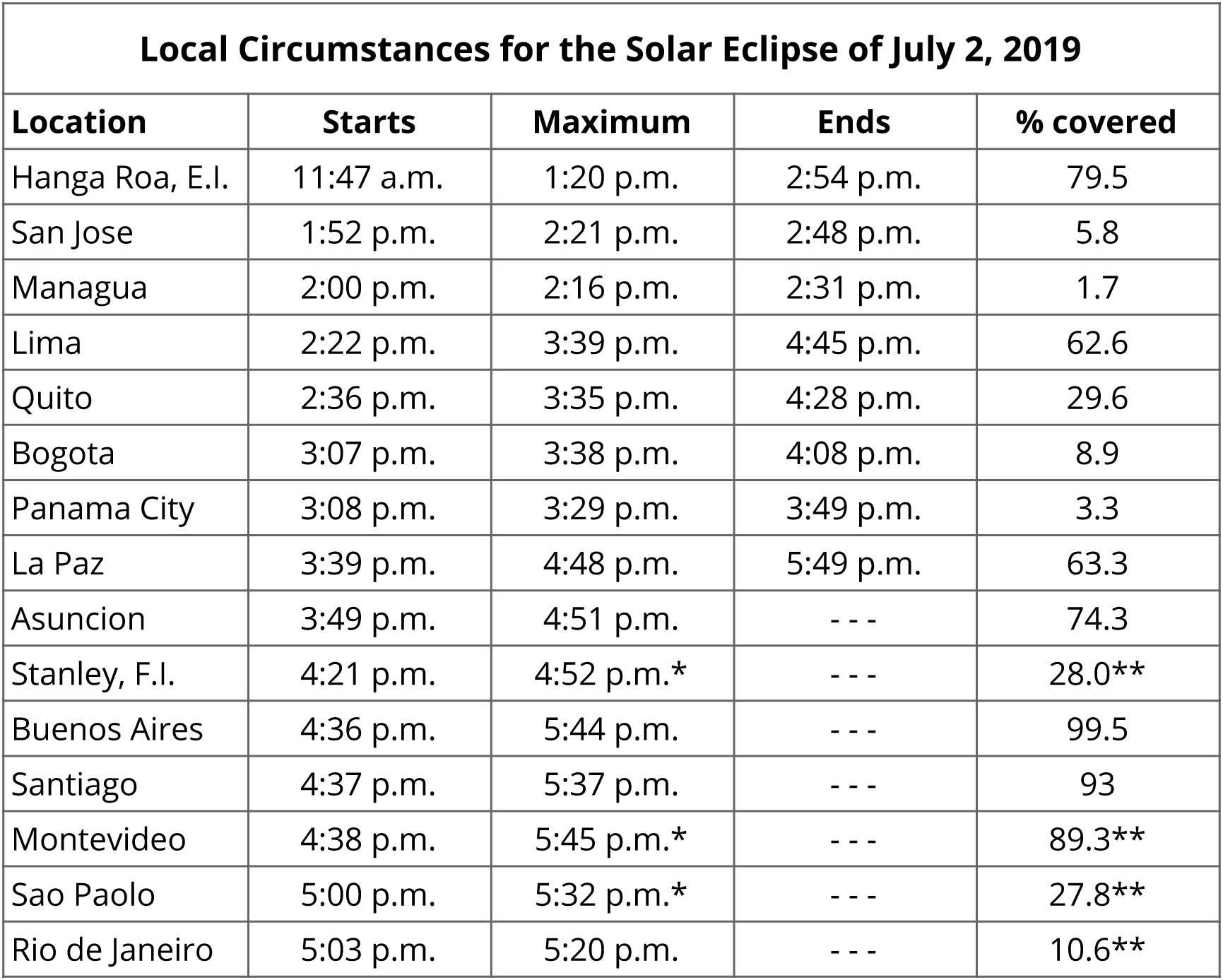
Finally, North Americans will have to wait until June 10, 2021, and Oct. 14, 2023, for a pair of annular ("ring of fire") eclipses; and April 8, 2024, for the next Great American Total Eclipse.
Editor's Note: If you snap an amazing picture of the July 2, 2019 total solar eclipse and would like to share it with Space.com's readers, send your photos, comments, and your name and location to spacephotos@space.com.
- Solar Eclipses: When Is the Next One?
- This Video of a 1900 Total Solar Eclipse Is the Oldest One Ever (and Made by a Magician!)
- 100 Years Ago, a Total Solar Eclipse Experiment Confirmed Einstein's Theory of Relativity
Joe Rao serves as an instructor and guest lecturer at New York's Hayden Planetarium. He writes about astronomy for Natural History magazine, the Farmers' Almanac and other publications, and he is also an on-camera meteorologist for Verizon FiOS1 News in New York's lower Hudson Valley. Follow us on Twitter @Spacedotcom and on Facebook.
Join our Space Forums to keep talking space on the latest missions, night sky and more! And if you have a news tip, correction or comment, let us know at: community@space.com.

Joe Rao is Space.com's skywatching columnist, as well as a veteran meteorologist and eclipse chaser who also serves as an instructor and guest lecturer at New York's Hayden Planetarium. He writes about astronomy for Natural History magazine, Sky & Telescope and other publications. Joe is an 8-time Emmy-nominated meteorologist who served the Putnam Valley region of New York for over 21 years. You can find him on Twitter and YouTube tracking lunar and solar eclipses, meteor showers and more. To find out Joe's latest project, visit him on Twitter.

